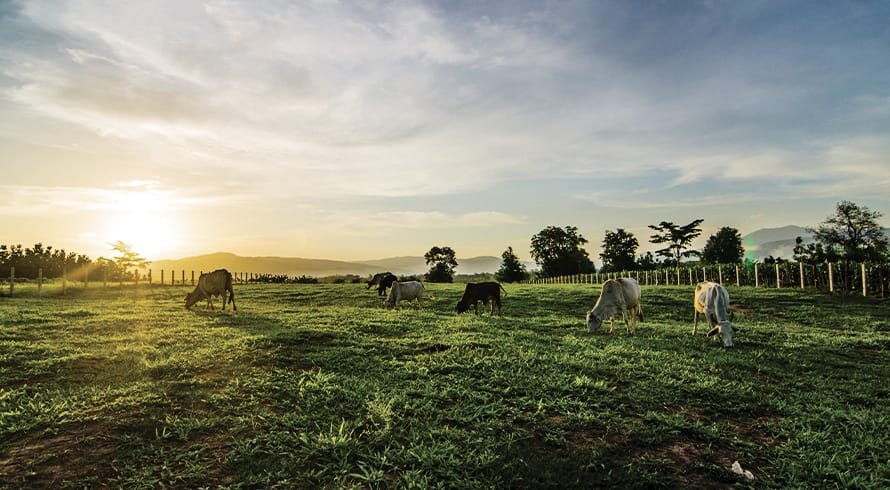Green ammonia, the next big step towards decarbonisation of the agriculture sector
At a glance
- South Africa's push for renewable energy: The President aims to reduce carbon emissions and promote renewable energy by streamlining regulatory processes for renewable energy projects, creating opportunities for the agriculture sector.
- Green ammonia's versatility: Green ammonia, produced through renewable energy-powered processes, can serve as an energy storage option and be used for decarbonizing agriculture through green fertilizers and as an alternative fuel, reducing carbon emissions in the sector.
- Legal framework considerations: The production and sale of green fertilizers need to comply with existing fertilizer regulations, while the Gas Act may require amendments or new legislation to accommodate "green" gases like green ammonia and hydrogen. Holistic approaches and consultations are necessary for effective decarbonization of the agricultural sector.
South Africa’s move to renewable energy and the easing of the process, provides the agriculture sector with an opportunity to utilise green ammonia to decarbonise its processes and value chain.
Green ammonia and its versatility
Green ammonia is produced by using hydrogen from water electrolysis and nitrogen separated from the air, whereafter hydrogen and nitrogen are reacted together at high temperatures and pressures to produce ammonia, through using the Haber-Bosch process, which is powered by renewable energy. Although the current production of ammonia mostly utilises grey hydrogen which is generated from fossil fuels.
The production of green ammonia can be seen as an energy storage option for excess renewable energy, as it can be stored more easily than hydrogen with existing distribution infrastructure already in place. Further to this, ammonia is versatile, with various associated uses and off-shoot products, especially in the agriculture sector. Green ammonia can contribute to decarbonise the agriculture sector along the various scopes of greenhouse gas emissions, including:
- Green fertilizers: Ammonia is considered a building block of all mineral fertilizers and is used across the agricultural sector. The use of green ammonia to produce fertilizers will lead to the decarbonisation of fertilizers used in the agriculture sector, the current standard production of which produces significant carbon emissions within the sector and attributes 1,8% of global carbon dioxide emissions.
- Alternative fuel: Ammonia can be used in fuel cells to produce electricity or burned in an engine, whereby green ammonia can replace diesel, providing a zero-carbon fuel benefit and limited redesign of existing diesel engines. The replacement of diesel with green ammonia will reduce carbon emissions during production as well as transport of agricultural produce to market and end-users.
Green ammonia provides the opportunity to significantly reduce the carbon footprint of the whole agriculture value chain. While this will require some adaption from the status quo, we have seen the imminent need to change the way things have always been done. In recent years we have seen the change in mindset of consumers when it comes to produce, with consumers looking towards sustainability and organic farming practices. With consumers becoming mindful of sustainable farming practices, the incorporation of green ammonia into the agricultural practices will further drive sustainable agriculture and reduce the carbon footprint of the sector.
Relevant legal framework
The production or sale of green fertilizers will need to comply with the requirements as set out in the Fertilizers, Farm Feeds, Seeds and Remedies Act 36 of 1947 and the Regulations Regarding Fertilizers, published under Government Notice R732 in Government Gazette 35666 of 10 September 2012. The relevant legislation does not make specific provision for green fertilizers and as such, the prescribed requirements for the various fertilizers apply and will need to be complied with. The prescribed requirements mostly relate to the production and sale of fertilizers, labelling and container requirements, import of fertilizers and registration requirements.
The Gas Act 48 of 2001 (Gas Act) does not make reference to ammonia specifically, but rather hydrogen rich gas which falls within the ambit of gas as defined and regulated under the Gas Act. The Gas Act, in its current form, does not provide for “green” gasses such as green ammonia or hydrogen. Amendments to the Gas Act may, therefore, need to be considered in order to specifically cater for “green” gasses or alternatively develop specific legislation for “green” gasses.
Conclusion
While significant efforts have been made to ease the permitting and registration processes for renewable energy, a holistic approach is required to ensure green technologies and off-shoot products such as green ammonia and green fertilizers are also promoted to ensure each sector is provided the same opportunities to reduce its carbon footprint. Thorough consultation between the Department of Agriculture, Land Reform and Rural Development, the agricultural sector and other key stakeholders will be necessary to ensure the transition towards decarbonising the agricultural sector is effective and considers the associated hurdles and red tape.
The information and material published on this website is provided for general purposes only and does not constitute legal advice. We make every effort to ensure that the content is updated regularly and to offer the most current and accurate information. Please consult one of our lawyers on any specific legal problem or matter. We accept no responsibility for any loss or damage, whether direct or consequential, which may arise from reliance on the information contained in these pages. Please refer to our full terms and conditions. Copyright © 2025 Cliffe Dekker Hofmeyr. All rights reserved. For permission to reproduce an article or publication, please contact us cliffedekkerhofmeyr@cdhlegal.com.
Subscribe
We support our clients’ strategic and operational needs by offering innovative, integrated and high quality thought leadership. To stay up to date on the latest legal developments that may potentially impact your business, subscribe to our alerts, seminar and webinar invitations.
Subscribe



